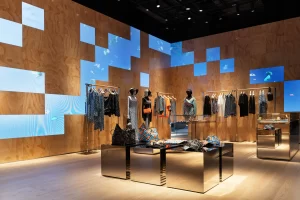
Since the introduction of LEDs, it has come a long way since its early days. Now we have more than just the lighting up of digital clock faces. When the LCD TV took over in the 2000s, it made a huge step over the old standard definition CRT TVs. Now, the LEDs are expected to make that similar jump.
The Evolution Of LED Display Televisions
When the LCDs are thinner and lighter, they are still using cold cathode fluorescent tubes in order to project white light to the pixels that will make up the screen. This however added weight and thickness to the TV sets. LED display fixed these problems.
Now, you can see plenty of gigantic TV screens that are barely an inch thick. You might even have one of these! This is the LED TV. now you might get a bit confused with these acronyms. You have to remember that LED TVs are still LCD TVs because the screens used are comprised of liquid crystals. This means that they are LED-backlit LCD TVs.
Instead of the fluorescent tubes, the LEDs shine light from behind the screen and illuminate the pixels in order to create an image. But since the LED-backlit TCs are smaller in size and have lower power consumption, they are thinner than our old LCD TV sets, meaning, they are more energy efficient. The LED TVs can also give you a wider color gamut that produces a much vivid picture.
Are All LED TVs Created Equally?
If you have noticed, there are plenty of LED televisions in the market these days. And since LED TVs are still new, there are different LED-backlit sets being sold these days. But you have to remember that not all of these LED TVs are created equal. There are sets that use white LED edge lighting in order to shine light across its display. The only advantage is its thinness.
The RGB Led-backlit sets provide better color. There are also configurations that allow ‘local dimming’ where the LEDs in the display can be brightened or dimmed independently so that you can create a more dynamic picture.
Another advantage of LED is its highlights compared to the compact fluorescent lights. This is because LEDs can instantly toggle on and off. This means that they can produce better black levels, especially in dark scenes. The white fluorescent lamps, on the other hand, have to stay on when you use your TV so the lights will tend to bleed through and lighten the picture when it comes to dark scenes.
LED Display – What’s In Store In The Near Future?
Soon, the most impressive uses of LEDs will come from an organic light emitting diodes or what we call OLEDs. The materials that are used to create the future semiconductors would be flexible. This allows scientists to create bendable lights and displays. So in the future, the OLEDs will be the next generation of TVs and smartphones.







